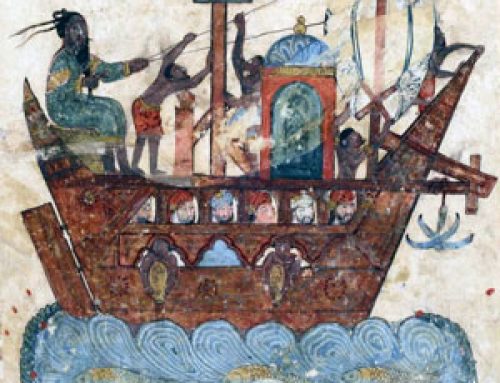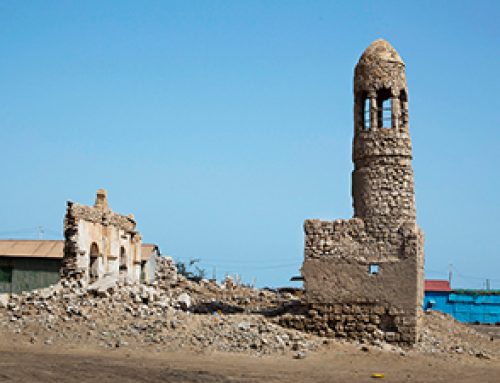
Ibn Battuta in China – on his travels
Continuing travels of Ibn Battuta
Ibn Battuta had already traveled much more than most people did! But even after visiting East Africa he didn’t go home to Morocco. Ibn Battuta rested for a few months in Mecca, and then he heard that the Sultan of India had good jobs for Islamic scholars and teachers, so he decided to go to India.
Ibn Battuta’s early travels
Islamic Empire geographers
All our Islamic Empire articles
All our Africa articles
But he had trouble finding a guide, so he ended up going back to Egypt, and then from there north to Turkey instead. From Turkey, he went east to Central Asia.
Ibn Battuta and the Mongols

Tomb of a Tughluq sultan in India
In Central Asia, Ibn Battuta was able to travel with a Mongol Khan all across Asia. In Astrakhan, the khan’s wife, who was a Byzantine princess, found out she was going to have a baby. Ibn Battuta volunteered to accompany her back to her father Andronicus III‘s court at Constantinople to have her baby, and so he got to Constantinople. He didn’t like it, because most people there were Christians.
The Palaiologi in Constantinople
Kublai Khan and the Mongols
India and China
When Ibn Battuta left Constantinople, he crossed Central Asia again, visited the Khan again in New Saray (north of the Caspian Sea, now in Russia), and then traveled south across Afghanistan to India in 1334.
Delhi Sultanate in India
In India, he found work working for the Sultan, and so he stayed in Delhi as a teacher and judge for seven years. But then the Sultan sent Ibn Battuta as his ambassador to China! So Ibn Battuta set out again.

Yonglegong Taoist temple in Shangxi (1247 AD)
It took him several years to get to China: he was attacked by bandits and pirates several times, and lost all his belongings in shipwrecks more than once. By the time he got to China, it was 1345, and Ibn Battuta was forty years old. He had been away from home for twenty years. Ibn Battuta didn’t like China, he says, because the people there were Buddhists instead of Muslims.
What is Buddhism?
Yuan Dynasty China
Heading home to Morocco

Traders approaching Timbuktu in Mali, Africa
Ibn Battuta decided to head back home to Morocco. It took him five more years to get there, and he had to travel through places where people were dying of the Black Death.
What’s the Black Death?
When he finally got home, in 1350, his mother and father were both dead (though not necessarily of the plague).
Ibn Battuta goes to Timbuktu
But Ibn Battuta did not stop traveling yet. He left very soon for Spain, where he saw the great palace at Granada, and when he came back to Morocco he soon took another trip south across the Sahara Desert to see the Kingdom of Mali in West Africa.
Alhambra palace in Spain
Medieval West Africa
He visited the king, Mansa Suleiman, and toured the city of Timbuktu. Then Ibn Battuta went home again. In 1354, he was fifty years old, an old man for that time, and he spent the rest of his life in Morocco as a respected judge, writing a book, the Rihla, that told all about his travels. Ibn Battuta died around 1368, when he was 64 years old.
More African Literature
Bibliography and further reading:




very nice information, because it was enough for me to finish my project, so thank you for this passage about Ibn Battuta.
I’m glad we could help! Best of luck with your project!
What a bunch of nonsense, ibne battuta didn’t like people in Constantinople because people where Christians and didn’t like people of china because people were Buddhist , dumba$$ he was travelled Italy and almost all of Africa and Egypt where people at that time where non Muslim… India still is a non Muslim country.
Most people in Africa were certainly Muslims in the time of Ibn Battuta, including in Egypt (which is in Africa). Most people in northern India were also Muslims. The reason India is a non-Muslim country today is that it was divided in the 1900s into two Muslim countries – Pakistan and Bangladesh – and a Hindu country that we call India.